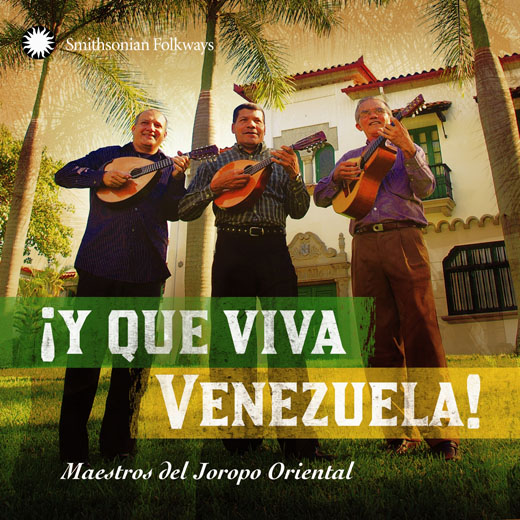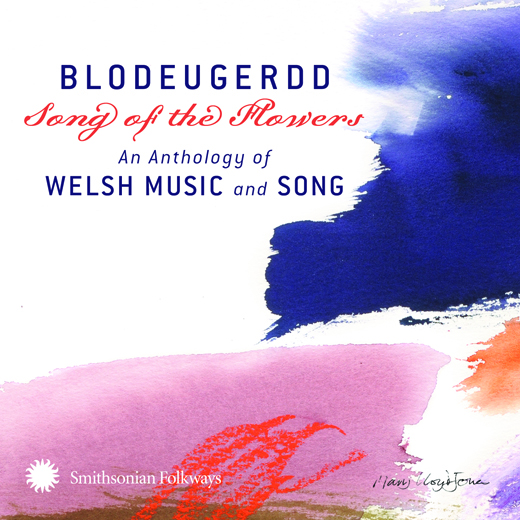Smithsonian Folkways Wins Awards at the Grammys and Indies
/https://tf-cmsv2-smithsonianmag-media.s3.amazonaws.com/filer/Los_Texmaniacs_CD_Cover1.jpg)
As happy as we were that Taylor Swift accepted her first four Grammy awards on Sunday sans interruptions from Kanye, a Smithsonian victory gave us more reason to celebrate after the 52nd Annual Grammy Awards.
The Texas-Mexican conjunto band Los Texmaniacs took home the 2009 Grammy award for Best Tejano Album for "Borders y Bailes," an album produced by Smithsonian Folkways.
An early fusion of musical elements from different cultures, traditional conjunto began when musicians in northern Mexico and along the southern border of Texas began to listen to German “oompa music” on the radio in the late 1920s, explains Max Baca Jr., the band’s leader, in the album's notes. They began to imitate the polka style of German accordions with their own instruments, including the bajo sexto guitar, an early version of the bass guitar, while keeping elements like the accordion.
Some musicians prefer to continue playing traditional conjunto. Others have updated the style with more modern instruments like electric guitar. Los Texmaniacs have found a balance between the two, infusing the style with blues and rock sounds but still keeping their traditional instruments. This allows the influence of early conjunto stars like accordionist Narciso Martínez and bajo sexto guitarist Santiago Almeida to shine alongside the influence of American British rock stars like Keith Richards and Mick Jagger (with whom the band is shown in a 1995 photograph in the album liner).
The songs on the album range from the traditional canción-polka, as heard in the song Marina, to the the slow, romantic-themed bolero (a Cuban style from the 1880s) featured in Cien Años (A Hundred Years). All tracks can be found here.
The band will continue to make music with the same intentions, "and that's to do hip music that everybody in the world can relate to, with the traditional conjunto elements," says Baca Jr in the album notes.

And the celebration doesn’t stop there: Two more Folkways albums also won recognition from the 2009 Independent Music Awards. The Maestros del Joropo Oriental took home best Latin album for "Y Que Viva Venezuela!" and the "Blodeugerdd Song of the Flowers: An Anthology of Welsh Music and Song" was awarded the best world traditional album.
Maestros del Joropo Oriental play joropo music (as their name suggests), a style that developed in Venezuela during the Spanish colonial New World experience from 1522 to 1811. Joropo is a lively dance with intricate zapateado (footwork), driven mostly by string instruments. The style this band plays, Joropo Oriental, derives from the eastern city of Cumaná and Margarita Island.
Joropo features a lead melody instrument, which can vary from the bandola oriental—an eight-stringed instrument similar to the guitar but with a more metallic sound—to the cuatro, a small guitar. The style can also take on several distinct forms. In the song Carúpano y Río Caribe, we hear a golpe, a song with repetitive, rhythmic sets of harmonic sequences. Other songs feature an estribillo, a free section where musicians improvise, which we hear in La Media Diana. All tracks can be found here.
"Blodgeugerdd Song of the Flowers" brought together modern Welsh musicians to record their interpretations of traditional Welsh Songs. The tracks highlight the traditional sounds of crwth and pibgorn (strings and reeds), as well as expressive vocals (sung in the Welsh language), the guitar and the harp.

Tracks like Y ’deryn pur (Gentle Bird), by Mary Hopkin evokes all of the nostalgia you’d expect from a traditional folk song, with gentle, rolling vocals, and a simple chord progression played by a single acoustic guitar.
“I first heard this beautiful song during my childhood when music was prominent in our daily lives,” Hopkin wrote in the album notes. “Hymns and folk songs were absorbed through the skin and poured out of our mouths with no conscious effort to learn the melodies and words.”
Other tracks, Ym Mhontypridd mae ’nghariad (My Lover is in Pontypridd), by Ceri Jones, are more soulful, with a haunting harp that at times recalls the style of the blues, and a mournful vocal line that explores the possibility of unrequited love. All tracks can be found here.
All three albums are available on Smithsonian Folkways. Just don't complain to us when you can't stop dancing or are cursing the mother who never let you take up the harp.
/https://tf-cmsv2-smithsonianmag-media.s3.amazonaws.com/accounts/headshot/erica-hendry-240.jpg)
/https://tf-cmsv2-smithsonianmag-media.s3.amazonaws.com/accounts/headshot/erica-hendry-240.jpg)